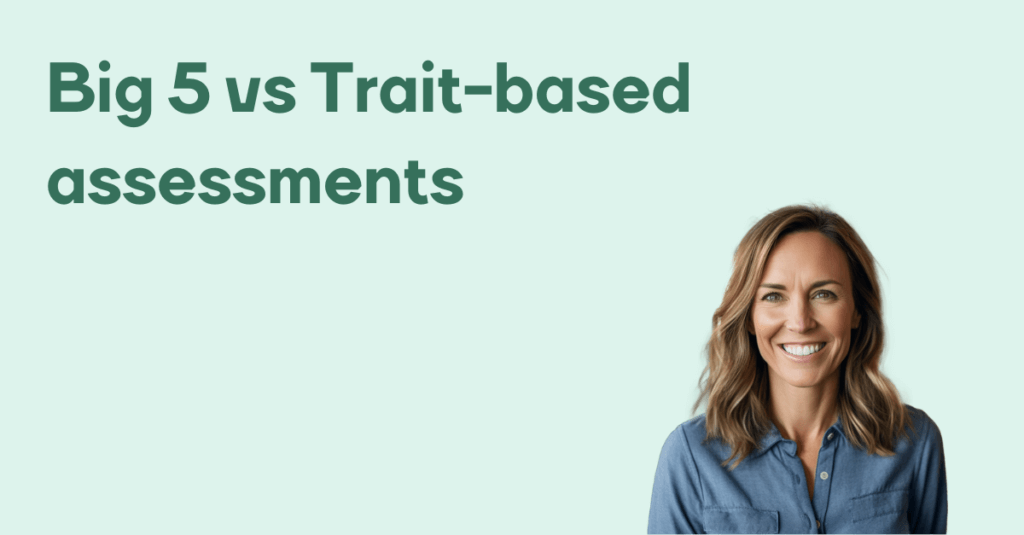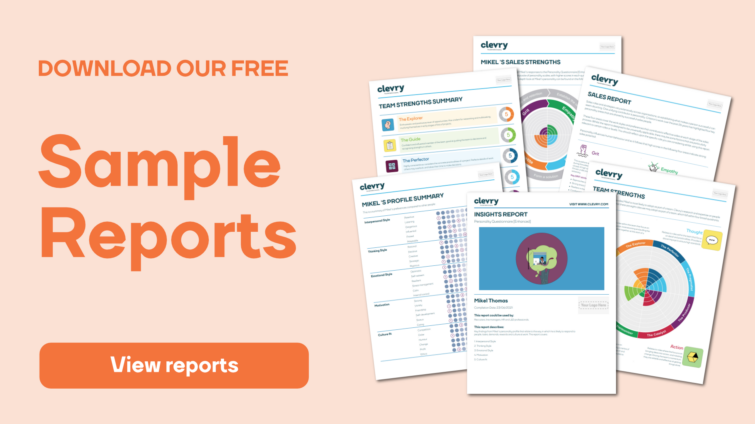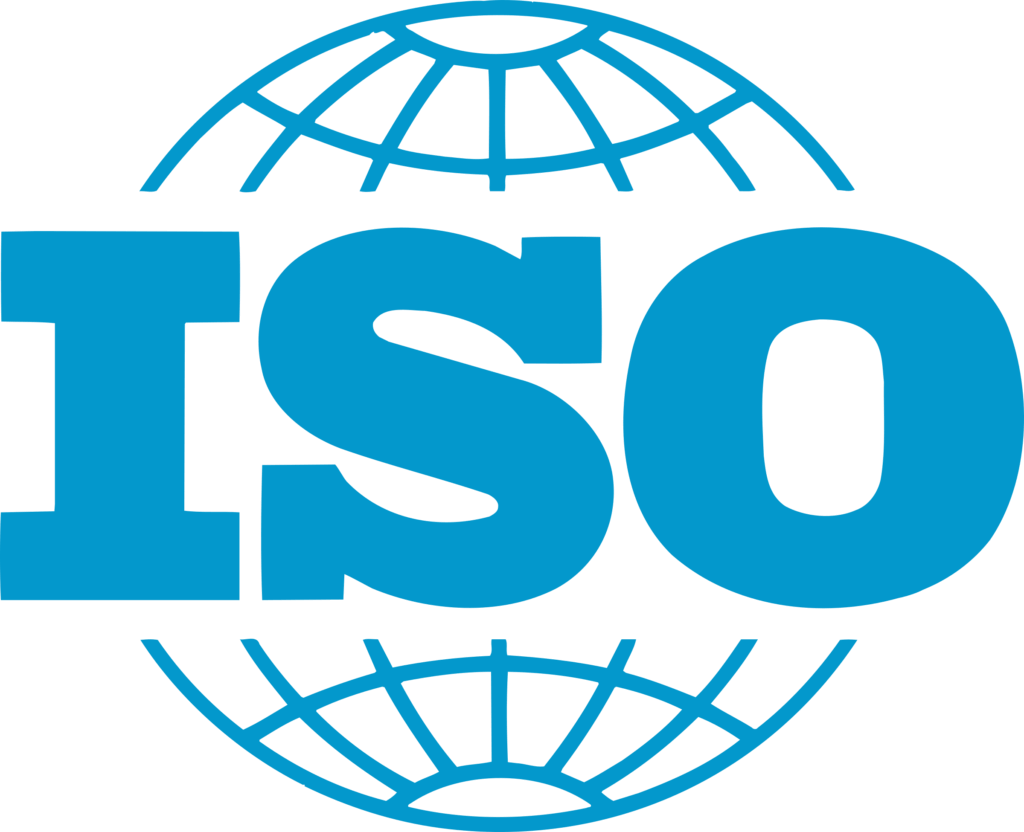Two widely used approaches in work-based personality testing are the Big Five personality model and trait-based assessments. While they both offer insights into personality, they differ significantly in structure, application, and utility.
Here, we delve into these differences to help HR professionals, hiring managers, and recruiters make informed choices.

Overview of the Big Five model
The Big Five personality model, also known as the Five-Factor Model (FFM), is a theory rooted in empirical research and widely regarded as a robust framework in psychology. It categorises personality into five broad dimensions:
- Openness to experience – creativity, curiosity, and willingness to explore new ideas.
- Conscientiousness – organisation, dependability, and a sense of responsibility.
- Extraversion – sociability, assertiveness, and enthusiasm.
- Agreeableness – compassion, cooperation, and trust.
- Neuroticism – emotional stability and resilience to stress.
Each dimension is a spectrum, allowing a broader, nuanced understanding of personality. The model is advantageous in recruitment contexts because it provides a well-rounded assessment of traits that are indicative of job performance, interpersonal compatibility, and cultural fit.
When using the Big Five in recruitment, assessments measure candidates’ placement on each of the five dimensions. Psychometric assessments based on the Big Five can predict job-related behaviours and outcomes. For example:
- Conscientiousness often correlates with higher performance across various roles due to traits like organisation and persistence.
- Openness can be crucial in creative or problem-solving roles, as it indicates a candidate’s comfort with novel challenges.
However, the Big Five does not evaluate job-specific skills or behaviours; instead, it provides a generalised understanding of personality. This can be both a strength and a limitation in recruitment contexts.
Trait-based personality assessments
Trait-based assessments, often used in recruitment, focus on role-specific personality traits and measure specific behaviours or tendencies relevant to particular job roles. They go beyond broad categories and zero in on particular aspects of personality critical to success in specific contexts. For instance:
- Traits like assertiveness or persuasiveness are often measured explicitly in sales or leadership roles.
- Attention to detail or risk tolerance might be emphasised in roles that require precision or strategic decision-making.
Trait-based assessments typically originate from theoretical frameworks developed to address specific contexts rather than broad psychological theory. They can be more prescriptive, with benchmarks or ideal scores established for certain roles, thereby enhancing their relevance and practical value in recruitment.
Psychometric assessment with trait-based models
In recruitment, trait-based assessments allow for greater customisation. A customer service role, for example, may benefit from assessing traits like empathy, stress tolerance, and patience. Meanwhile, a role in finance might prioritise risk-aversion and conscientiousness, for example.
These assessments are often structured around the company’s needs, evaluating candidates’ compatibility with precise job-related competencies.
Key differences between Big Five and Trait-based assessments
Breadth vs. Specificity
The Big Five provides a broad overview of personality, offering a high-level understanding of an individual’s general disposition. This makes it ideal for roles requiring a wide-ranging perspective on traits like openness or conscientiousness.
Trait-based assessments, however, excel in specificity. By focusing on particular characteristics directly tied to job performance, they deliver actionable insights tailored to the unique demands of a role, making them an effective tool for targeted hiring decisions.
Generalised vs. customised
The Big Five benefits from extensive research, demonstrating predictive validity across industries, roles, and cultures. However, its more generalised nature may overlook the nuances of specific job requirements.
In contrast, trait-based assessments are designed for greater precision. While they may not have the universal applicability of the Big Five, their targeted focus ensures they align closely with the unique demands of specialised recruitment scenarios.
Application in candidate selection
The Big Five is often employed for more holistic candidate evaluations, including cultural fit and interpersonal dynamics. Its broad nature makes it well-suited for initial screening stages or roles requiring general stability and adaptability.
Trait-based assessments can really shine in the later recruitment stages, where the focus shifts to pinpointing candidates with specific attributes essential for success. For example, traits like grit in sales or meticulousness in technical roles can be assessed with greater accuracy.
Choosing between Big Five and Trait-based models in recruitment
The decision to use the Big Five or trait-based assessments should align with your company’s overall recruitment goals:
- For general hiring, especially in large-scale recruitment or for roles without narrowly defined personality requirements, the Big Five provides a comprehensive picture of candidates’ personalities.
- For specialised roles, trait-based assessments may be more effective in predicting job success by focusing on competencies tied directly to role requirements.
Integrating both models for better outcomes
The good news is that you can have it all. Some companies adopt a hybrid approach, utilising the Big Five for an initial screening to understand broad personality traits and then implementing trait-based assessments in final selection stages to identify role-specific attributes.
For instance, candidates might first undergo a Big Five assessment to evaluate fit within company culture and general job compatibility. Those who pass this initial stage could then complete a trait-based assessment tailored to the job’s specific demands.
The bottom line
Both the Big Five Personality Model and trait-based personality questionnaires offer unique insights that are valuable to recruitment. The Big Five provides a well-rounded, universally applicable profile, while trait-based assessments bring precision to roles with defined personality demands.
By understanding these differences, companies can better optimise their recruitment strategies, making data-driven decisions that enhance team dynamics, improve performance outcomes, and ultimately strengthen organisational culture and deliver business results.



